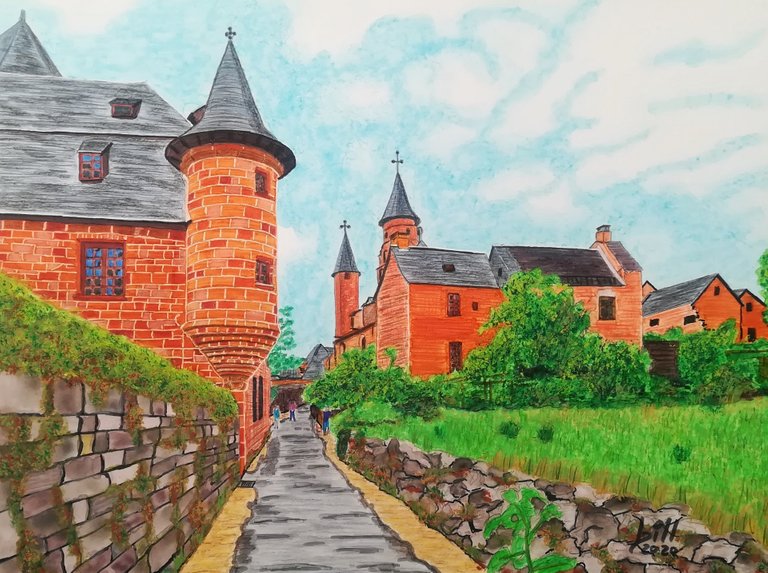
mixed media on stone paper
40 x 30 cm (15 ¾" x 11 ⅞")
Collonges-la-Rouge is a beautiful village in the Limousin region of France built almost entirely of red sandstone in the 8th century. I had painted this exact scene last year and redid it now as a twofold experiment:
Firstly, I was curious whether my skills as a budding artist have improved since then. (I like to think so.) Secondly, I wanted to try a material referred to as "stone paper" or "rock paper".

[ watch this video on folkerwulff.com ]
Collonges-la-Rouge ist ein wunderschönes Dorf in der Region Limousin in Frankreich, das im 8. Jahrhundert fast vollständig aus rotem Sandstein erbaut wurde. Genau diese Szene hatte ich im vergangenen Jahr gemalt und habe sie nun als ein zweifaches Experiment neu gemalt:
Zum einen war ich neugierig, ob sich meine Fähigkeiten als angehender Künstler seitdem verbessert haben. (Ich denke schon.) Zweitens wollte ich ein neuartiges Material ausprobieren, das als "Steinpapier" bezeichnet wird.

Stone paper is a type of paper-like material made from calcium carbonate bonded with a resin of high-density polyethylene (HDPE). It is considered environmentally safe since no water, wood, acid, or bleach is used in its manufacture and it's photodegradable.
What intrigued me about it is the fact that this "paper" won't buckle when wet, not even when it's soaked with water. Alas, on the flip side, the absorbency isn't high enough to give a decent painting surface for watercolor. However, some may find the pooling-in-place of the watercolor to give abstract paintings a unique appeal. A matter of taste.
Gouache works pretty well on stone paper, as long as it's not too thin. However, the drying time is increased. Whether that's good or bad depends on your preference. Acrylics behave about the same as gouache. My wife Caroline (@caro-art) tried it and gave up quickly, because she didn't like it at all, mostly for lack of tooth. Stone paper is velvety smooth. I didn't try oil painting.
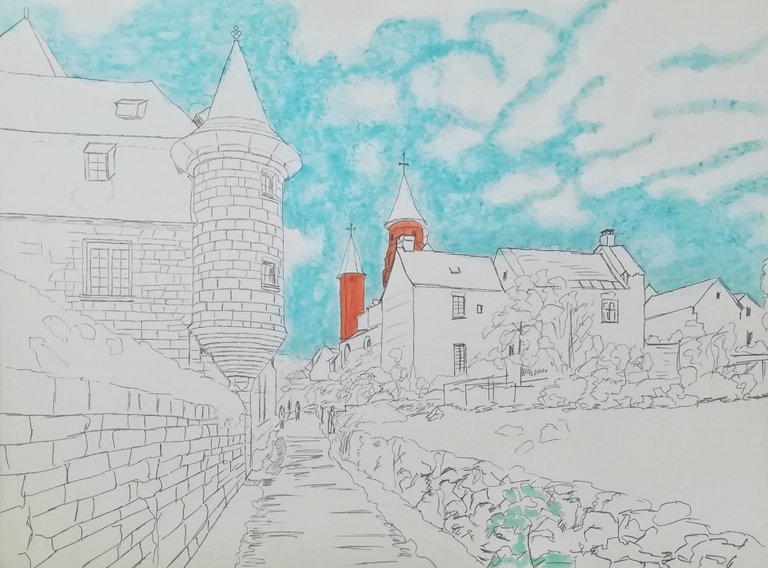
Steinpapier ist ein papierähnliches Material aus Kalziumkarbonat, das mit einem Harz aus hochdichtem Polyethylen (HDPE) gebunden ist. Es gilt als umweltverträglich, da bei seiner Herstellung kein Wasser, Holz, Säure oder Bleichmittel verwendet wird und es photochemisch abbaubar ist.
Was mich daran fasziniert hat, ist die Tatsache, dass sich dieses "Papier" nicht verformt, wenn es nass ist, nicht einmal, wenn es mit Wasser getränkt wird. Leider ist die Saugfähigkeit im Gegenzug auch nicht hoch genug, um eine anständige Malfläche für Aquarelle zu bieten. Manche denken jedoch vielleicht auch, dass diese "Pfützenbildung" beim Aquarellieren abstrakten Gemälden einen gewissen Reiz verleiht. Geschmackssache.
Gouache funktioniert ziemlich gut auf Steinpapier, solange sie nicht zu flüssig ist. Allerdings wird die Trocknungszeit verlängert. Ob das jetzt gut oder schlecht ist, hängt von eurer Vorliebe ab. Acrylfarben verhalten sich in etwa gleich wie Gouache. Meine Frau Caroline (@caro-art) hat das ausprobiert und schnell aufgegeben, weil ihr der fehlende "Grip" des Steinpapiers überhaupt nicht gefiel. Steinpapier ist nämlich samtartig glatt. Ölmalerei habe ich nicht ausprobiert.
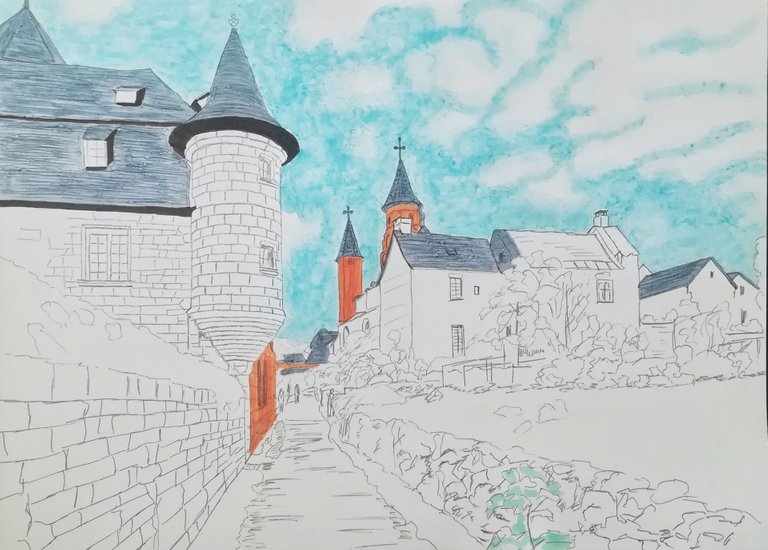
Dry media like graphite pencil or my Faber-Castell Polychromos colored pencils work extremely well on stone paper. Despite its smoothness, the calcium carbonate acts like an ultra-fine sandpaper and this gentle abrasion leads to a very even deposit of pigments on the paper. I haven't tried soft pastels, but I imagine the effect is similar.
For alcohol markers and ink the stone paper is excellent! I did most of this painting with alcohol markers and got real intense colors as you can see. I even managed to lift out cloud shapes after the fact, similar to watercolor, by spraying small amounts of isopropyl alcohol on a paper tissue and dabbing away. Unfortunately, I did the spraying partly over my painting and the aerosolized alcohol droplets caused a bit of spottiness in the originally even blue surface.
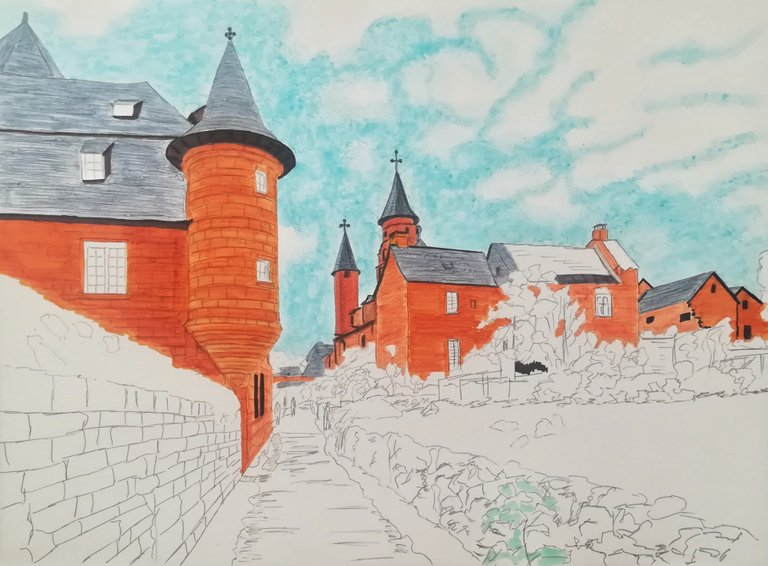
Trockene Medien wie Bleistift oder meine Faber-Castell Polychromos-Farbstifte funktionieren hervorragend auf Steinpapier. Trotz seiner Glätte wirkt das Kalziumkarbonat wie ein ultrafeines Schleifpapier, und dieser sanfte Abrieb führt zu einer sehr gleichmäßigen Ablagerung der Pigmente auf dem Papier. Ich habe keine Pastellkreiden ausprobiert, aber ich kann mir vorstellen, dass der Effekt ähnlich ist.
Für Alkoholmarker und Tinte ist das Steinpapier hervorragend geeignet! Ich habe den größten Teil dieses Gemäldes mit Alkoholmarkern gemalt und habe sehr intensive Farben bekommen, wie ihr sehen könnt. Ich habe es sogar geschafft, Wolkenformen nachträglich herauszutupfen, ähnlich wie bei Aquarellfarben, indem ich etwas Isopropylalkohol auf ein Papiertaschentuch gesprüht habe. Leider sprühte ich dabei teilweise über mein Gemälde, und die aerosolisierten Alkoholtröpfchen verursachten eine milde Fleckenbildung in der ursprünglich gleichmäßig blauen Oberfläche.

My conclusion is, stone paper is certainly an interesting material for artists, but I prefer a good traditional watercolor paper. All the media I mentioned I actually used in this painting, and I could have done better on paper, with the exception of the alcohol markers. On paper, marker ink stains too much, which prevents nuanced layering. All told, the lack of texture in the stone paper also translates into a lack of character in the finished painting, at least for me.
As it turns out, I did find a great use of stone paper for watercolorists after all: It makes a great disposable pallette! With a paper-white surface and just enough absorbency to prevent beading, it makes mixing watercolors that much easier to judge. Since there is no sizing, there is no contamination of your watercolors - and if you like, you can let your palette dry and archive it for later reuse. No more running out of palette space, no more washing away of those valuable pigment mixes. Yay!

Mein Fazit ist, dass Steinpapier bestimmt ein interessantes Material für Künstler ist, aber ich bevorzuge ein gutes traditionelles Aquarellpapier. Alle von mir erwähnten Medien habe ich tatsächlich in diesem Gemälde verwendet, und auf normalem Papier hätte ich ein besseres Endergebnis bekommen, mit Ausnahme der Alkoholmarker. Papier wird durch die Tinte der Marker zu stark durchgefärbt, was eine nuancierte Schichtung der Farben ziemlich unmöglich macht. Alles in allem ergibt die fehlende Textur des Steinpapiers auch einen Mangel an Charakter im fertigen Gemälde, zumindest für mein Empfinden.
Wie sich jedoch herausstellte, fand ich doch noch einen tollen Verwendungzweck des Steinpapiers für Aquarellmaler: Es eignet sich hervorragend als Einweg-Palette! Mit einer papierweißen Oberfläche und gerade genug Saugfähigkeit, um ein Abperlen zu verhindern, macht es die Beurteilung von Aquarellfarben beim Mischen viel einfacher. Da es keine Leimung gibt, gibt es keine Verunreinigung eurer Aquarelle - und wenn ihr wollt, könnt ihr eure Palette austrocknen lassen und für die spätere Wiederverwendung archivieren. Es wird nicht mehr eng auf der Palette und die wertvollen Pigmentmischungen werden nicht mehr den Ausguss runtergespült. Juhu!
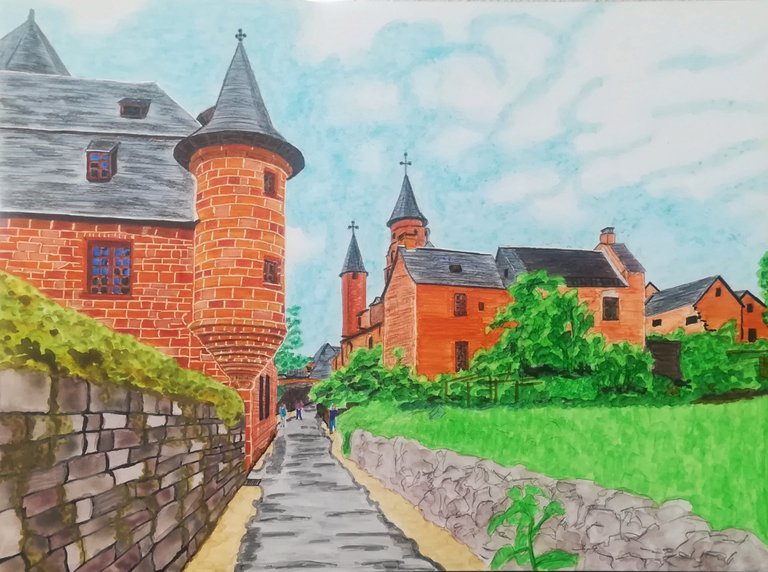
Thanks for looking, and please don't forget to upvote and reblog if you liked my art. Until next time!
Danke fürs Anschauen, und vergesst bitte nicht das Upvoten und Rebloggen, wenn euch mein Beitrag gefallen hat. Bis zum nächsten Mal!

Du hast ein Upvote von mir bekommen, diese soll die Deutsche Community unterstützen. Wenn du mich unterstützten möchtest, dann sende mir eine Delegation. Egal wie klein die Unterstützung ist, Du hilfst damit der Community. DANKE!